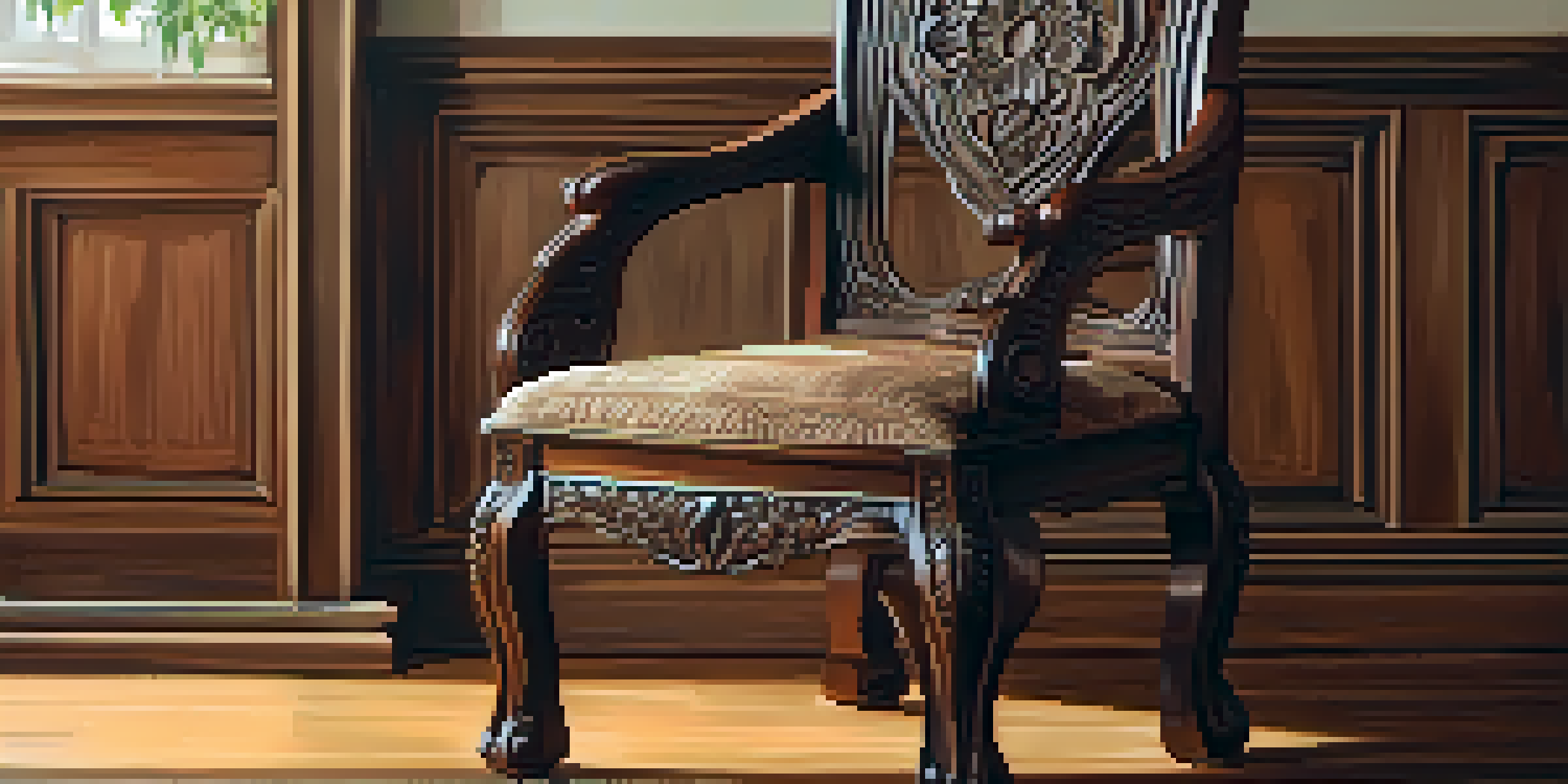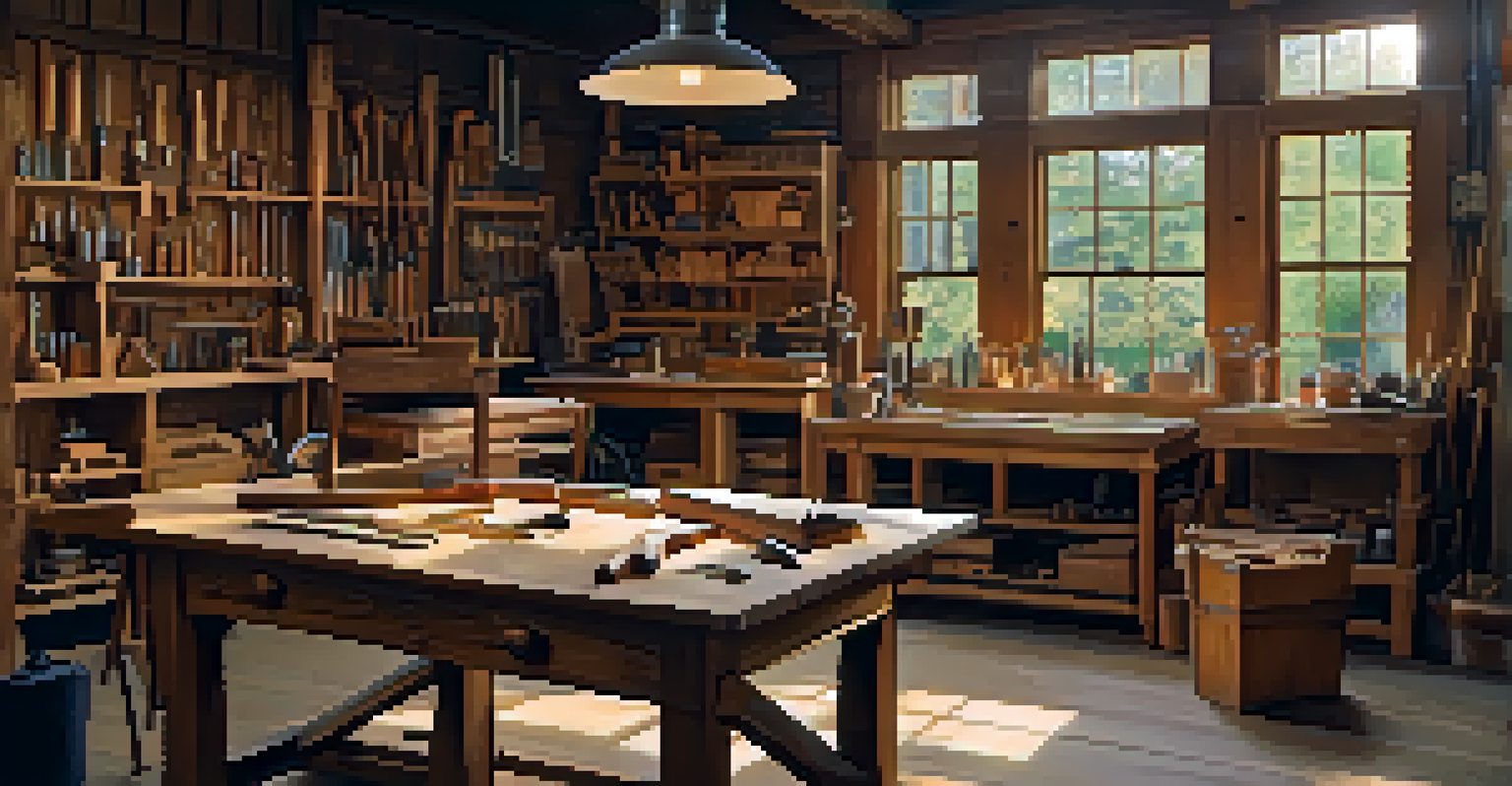The Importance of Wood Selection in Carved Furniture

Why Wood Selection Matters in Carved Furniture
Selecting the right wood is fundamental in creating carved furniture that lasts. The type of wood influences not just the appearance but also the durability and functionality of the piece. Each wood species has unique characteristics, such as grain pattern, color, and hardness, which can affect the overall aesthetic and structural integrity.
Wood is the most versatile and durable material that nature gives us, and it has a beauty that cannot be replicated.
Imagine crafting a beautiful chair from soft pine. While it may look stunning, the softness means it could dent or wear down quickly under regular use. In contrast, a hardwood like oak or cherry will not only enhance the visual appeal but also ensure longevity and resilience, making the initial investment worthwhile.
Ultimately, the choice of wood sets the stage for the entire project. It influences the carving process, the finish options available, and how well the furniture can withstand the test of time and use.
Common Wood Types Used in Carved Furniture
When it comes to carved furniture, several wood types stand out for their workability and beauty. Hardwoods like oak, walnut, and cherry are often favored due to their density and stunning grain patterns. These woods not only take well to intricate carvings but also offer a rich color palette that can enhance any room's decor.

On the other hand, softer woods such as pine or cedar are easier to carve and can be more cost-effective. However, they may not hold up as well over time, particularly in high-traffic areas. Understanding the properties of each wood type can help makers select the best option for their specific project needs.
Wood Selection Influences Durability
Choosing the right type of wood is essential, as it affects not only the appearance but also the longevity and functionality of carved furniture.
Ultimately, the choice between hardwood and softwood depends on the desired outcome. If the goal is a heirloom piece that will last generations, hardwood is often the way to go. For decorative items or less frequently used furniture, softer woods can still be an excellent choice.
The Role of Grain Patterns in Carving
Grain patterns play a pivotal role in the aesthetic and structural aspects of carved furniture. The unique patterns found in different wood species can add visual interest and depth to a piece. For instance, the swirling grain of mahogany can elevate a simple design into something truly remarkable.
The best craftsmanship always reflects an understanding of the material.
When carving, artisans must consider how the grain will interact with their tools. Cutting against the grain can lead to splintering, while cutting along it can create smoother finishes. Understanding these nuances can help artisans create more precise and beautiful carvings.
Additionally, the grain can influence the way the wood absorbs stains and finishes, affecting the final look of the furniture. A well-chosen wood with an appealing grain can enhance the overall design and ensure the piece stands out.
Impact of Wood Seasoning on Carving Quality
Wood seasoning is a crucial process that prepares wood for carving. Properly seasoned wood is less likely to warp, crack, or shrink, which can ruin a beautifully carved piece. This process involves drying the wood to a specific moisture content, ensuring it remains stable over time.
Imagine trying to carve a detailed design into a piece of wood that has not been properly seasoned. As the wood continues to dry, it may shift, leading to cracks or alterations in your design. Such issues can be frustrating and costly, making it essential to prioritize seasoning.
Grain Patterns Enhance Aesthetics
The unique grain patterns in different wood species add visual depth and influence the carving process, impacting the final appearance of the furniture.
By investing time in seasoning wood, artisans can improve their carving outcomes significantly. The result is furniture that not only looks exceptional but also stands the test of time, providing value for years to come.
Choosing Sustainable Wood Sources
In today’s world, sustainability is more important than ever, especially in woodworking. Choosing wood from sustainable sources helps protect forests and promotes responsible forestry practices. This conscious choice not only benefits the environment but also adds value to the finished piece, as consumers increasingly appreciate eco-friendly products.
Sustainable wood is often harvested from managed forests that replant and maintain healthy ecosystems. By selecting wood from these sources, artisans can create beautiful products while minimizing their environmental impact. This practice aligns with a growing trend towards sustainability in consumer purchasing decisions.
Incorporating sustainable practices into wood selection can enhance a brand’s reputation and appeal. It's a win-win situation where artisans create stunning furniture while contributing positively to the planet.
Finishes and Their Influence on Wood Selection
The finish applied to carved furniture can greatly influence the choice of wood. Different finishes react uniquely with various wood types, affecting both appearance and durability. For example, oil finishes might enhance the natural grain of a hardwood like walnut but could leave a softwood looking dull.
Understanding how finishes interact with wood can help artisans make informed decisions during the selection process. A well-chosen finish can highlight the beauty of the wood and protect it from moisture, scratches, and wear. This consideration is essential for ensuring the furniture not only looks good but also lasts.
Sustainability Adds Value
Selecting wood from sustainable sources not only benefits the environment but also enhances the appeal of the finished furniture to eco-conscious consumers.
Ultimately, the synergy between wood type and finish can create a masterpiece. By taking the time to consider both elements, artisans can craft furniture that is not only beautiful but also enduring.
The Art of Balancing Aesthetics and Functionality
When selecting wood for carved furniture, there’s an essential balance between aesthetics and functionality. While it’s tempting to choose wood solely based on its beauty, the practical aspects must also be considered. A stunning piece made from a less durable wood may not serve its purpose well over time.
For example, a beautifully carved table made from a softwood might look amazing but could be easily damaged during everyday use. In contrast, a more durable hardwood not only provides longevity but can also be equally stunning when properly finished. This balance ensures that the furniture remains both a visual delight and a functional piece.

Striking the right balance involves assessing the intended use of the furniture. By thoughtfully considering aesthetics and functionality together, artisans can create pieces that are not only beautiful but also practical for everyday living.